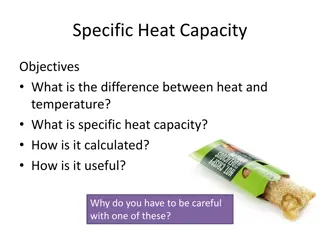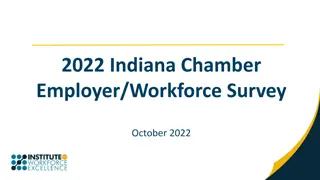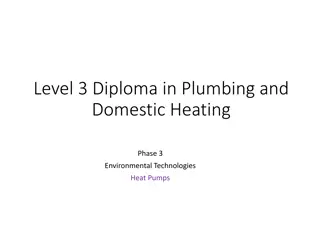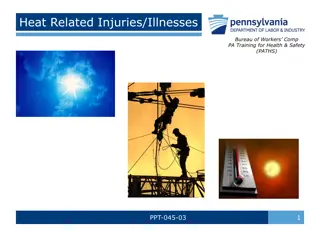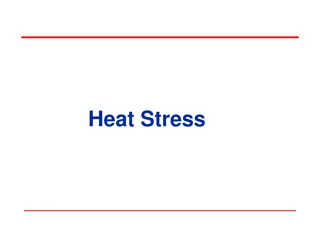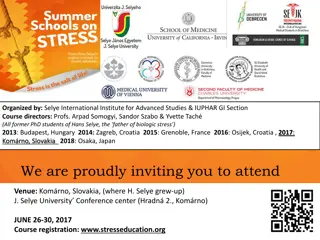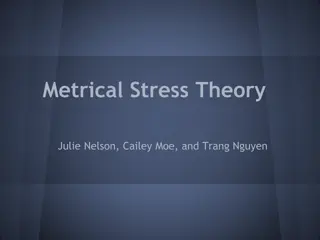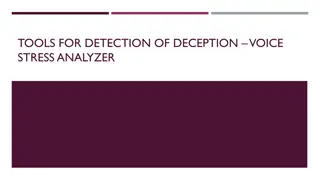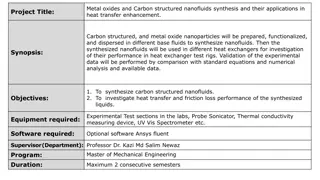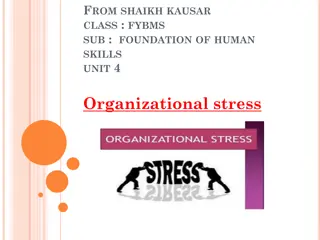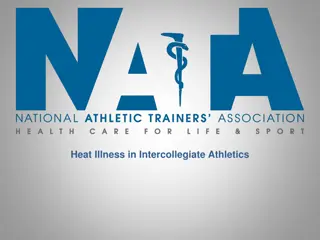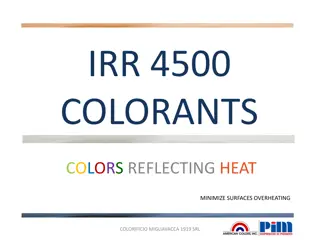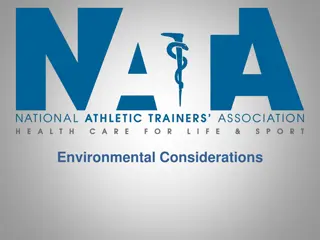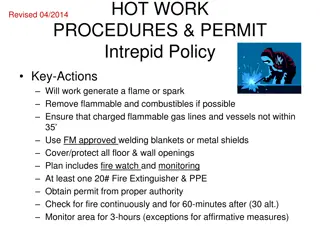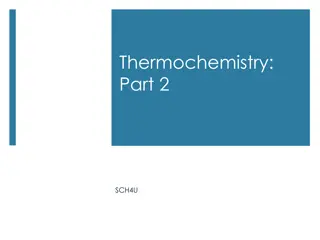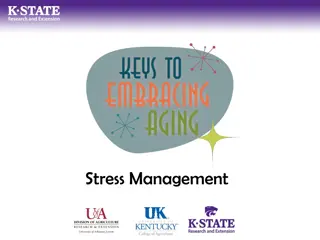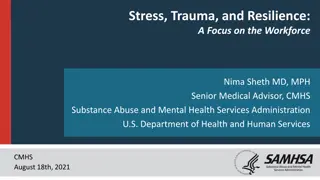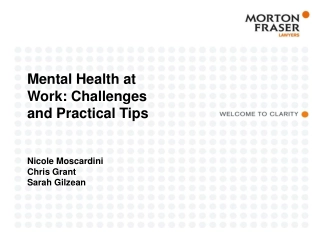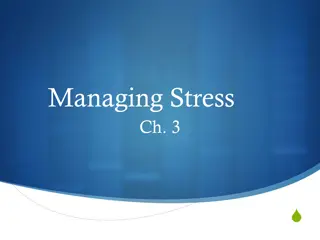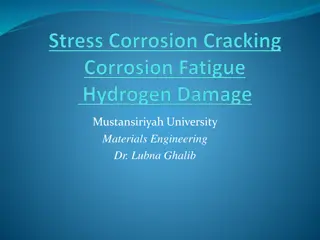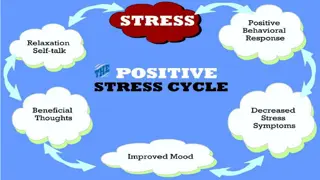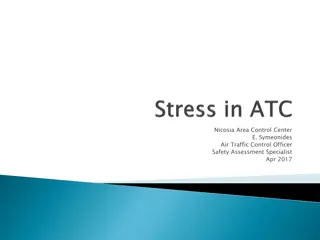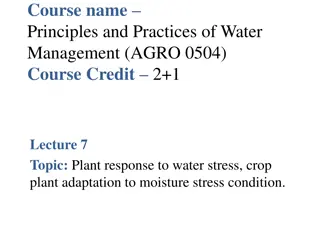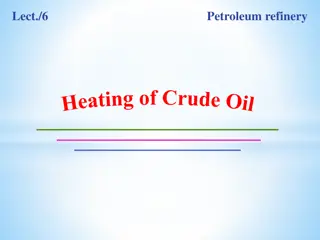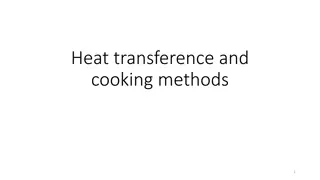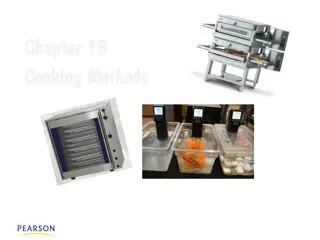Development of Heat Stress Management Standard for Workforce in Hot Environments
As per Ministerial Decisions, a Heat Stress Management Committee was established to create a standard for protecting workers in hot environments. The document focuses on various aspects including heat balance, heat-related illnesses, controls, measurement, medical monitoring, and more. Engineering and administrative controls, acclimatization, and work schedule adjustments are recommended to mitigate heat stress. The collaborative effort aims to ensure a safer work environment during hot summer months.
Download Presentation

Please find below an Image/Link to download the presentation.
The content on the website is provided AS IS for your information and personal use only. It may not be sold, licensed, or shared on other websites without obtaining consent from the author. Download presentation by click this link. If you encounter any issues during the download, it is possible that the publisher has removed the file from their server.
E N D
Presentation Transcript
Objectives Establish a new Standard to protect the workforce working in hot work environments and exposed to heat 2
Background and Current Status As stipulated in Article 16 of Ministerial Decision 286 / 2008. The Ministry of Manpower requires the work shall be suspended during the hot summer months between 12.30 and 3.30 pm However, an amendment by the Ministerial Decision 322 / 2011 allows certain activities to continue work with an approved Ministry waiver, imposing special conditions to individual companies. Moreover, MoMP inspections revealed unsatisfactory compliance and varied practices among different operators. A Heat Stress Management Committee chaired by OPAL was formed in collaboration with MoMP/ MOG/ O&G Operators representatives has decided to establish a Heat stress management Standard to address the challenges and set controls to mitigate them with a pragmatic approach. Since March 2016 OPAL Steering committee and working groups held 6 meetings/ workshops to align on major requirements. The concerted joint efforts resulted in the OPAL Heat Stress Management Standard V1, that contain minimum mandatory requirements agreed between all parties. 3
Heat Stress Standard Working Committee Orgainzations Focal point MoMP Hilal Al Falahi; Humood Al Hinai MOG Khalid Al Hinai Sohar Aluminium Dr. Manjunath G. BP Dr. Issa Said al Shuaili; Tariq Al Sabahi; Laila al Hashmi CCED Nigel Gallivan Daleel Gharib al Busaidi; Ahmed al Mahruqi Occidental Dr. Khalid Rushdi; Hassan al Ajmi OOCEP Sulaiman Al Sulaimi OPAL Dr. Ramesh Sivathanu ORPIC Hamsa Al Maskari PDO Dr. Salim al Sawai; Mitul Desai Petrogas Dr. Ghudayyer Al Waheibi ARA Petroleum Maawayah Al Ghassani 4
Document Composition The main document contains sections addressing the following 1. Introduction 2. Ministerial Decision Regarding Summer time Working Hour s Restrictions 3. Heat Balance and Heat Exchange 4. Heat-Related Illnesses 5. Fundamental and Risk Based Heat Stress Controls 6. Measurement of Heat Stress 7. Medical Monitoring & Provision of First Aid and Emergency Treatment 8. Control of Heat Stress and Heat Stress Reduction Measures 9. Heat Index Communication 10. Protection from Sunburn 11. Heat Stress Awareness Program 12. Review and Audit 13. OPAL Minimum Requirements for Heat Stress Management Program 5
Controlling Heat Stress Engineering Controls: Reduce physical demands of the work; use powered assistance for heavy tasks (i.e. mechanization) Use of barrier; use furnace wall insulation, metallic reflecting screen Administrative Controls Acclimatization 6
Controlling Heat Stress Work schedule Shorten duration of each exposure; allow frequent short breaks; more-frequent short exposures Staff rotation Introduce working in pairs (buddy system) Schedule very hot jobs in cooler parts of the day when possible Hydration Provide adequate portable water Encourage water intake at frequent intervals to prevent dehydration. Rest and recovery Provide shaded and/or air-conditioned areas nearby Other considerations Worker medical evaluations/health surveillance Train all workers and raise heat awareness Add extra personnel to reduce exposure time for each member of the crew. Personal protective clothing and equipment Reflective clothing, Hats/ helmets. Heat Alert Program (HAP) Implement Thermal Work Limit (TWL) heat index measurement or equivalent Heat Stress Index Communication 7
Thermal Work Limit Calculator 46 Dry Bulb Temp ( C) 38 Wet Bulb Temp ( C) 45 Globe Temp ( C) 2.0 Wind Speed (m/sec) Calculate 8
Document Composition TWL (W/m2) Working zone Intervention > 220 140-220 No limits on self-paced work for trained, hydrated workers. No restriction for acclimatized workers. Workers with uncertain acclimatization status should not work alone in this zone. Unrestricted Acclimatization Be aware of increased risk of heat illness Dehydration test for first two shifts back from leave Buffer zone exists to identity situations in which environmental conditions may be limiting to work. 115-140 Buffer Any practicable intervention to reduce heat stress should be implemented e.g. provide shade, improve ventilation etc. Working alone to be avoided if possible Unacclimatized * workers not to work in this zone Use the technical information sheets 'Work-rest cycling - Sample schedules and 'Fluid requirements for working in heat' to prescribe maximum exposure time, work/rest cycling and fluid intakes appropriate for type of work and conditions. Work limited to essential maintenance or rescue operations: < 115 Withdrawal No person to work alone No unacclimatized* person to work Documentation required authorizing work in hostile thermal conditions tor specific purpose Specific induction required emphasizing hydration and identifying signs of heat strain Apply 20 minutes work - 40 minutes rest schedule Required fluid intake exceeds 600 ml per 30 minutes Personal water bottle (2 litre capacity) must be on the Job at all times Mandatory dehydration testing at end of shift * Note: Unacclimatized workers are those who have been off work for more than14 days due to illness or leave, outside of the tropics. 9
Implementation strategy - way forward OPAL Engagement with MOG and CEOs Roll out 10
Objectives Background, current status Different standards. Objective As majority of our employees are based in the interior remote locations, we take an extra interest in their welfare. We believe that decent accommodation is employee s basic rights in the work place. Establish a new Standard to standadrise all camps and specify the minimum mandatory requirements for camps. Scope This standard is applicable to all oil and gas Operators and their nominated contractors and subcontractors. Implementation strategy and way forward This standard is applicable to all new camps constructed after 1stJanuary 2017. Current Camp Owners at their discretion are encouraged to retrospectively implement these requirements in an effort to improve the standards of Accommodation & living. 12
Governing principles Every camp shall have the following attributes that enhance living standards Privacy Comfort Security Health Safety Sense of home Sense of community. 13
Document composition Definitions and Abbreviations ........................................................................................................... 6 Camp Standards ................................................................................................................................... 9 Camp design standards .................................................................................................................. 11 Living and Sanitation Standards .................................................................................................... 13 Food Safety and Hygiene ............................................................................................................... 17 Health Care Facilities ....................................................................................................................... 24 Facility Management ........................................................................................................................ 28 Waste Management ........................................................................................... Fire Prevention and Emergency Mitigation .................................................................................. Demobilizing and Site Restoration ................................................................................................ 34 Appendices ........................................................................................................................................ 35 Annexure ........................................................................................................................................... 41 31 32 14
Non-compliance to the Standard All requirements stated in this standard are the minimum and hence no step-out is applicable to them. Non-compliance to this standard shall be treated as inadequate to occupy and operate the camp facility. Operator/Company shall ensure that these are addressed immediately or within minimum time limits as agreed between Camp Owner and the Operator/ Company. Failing to comply with the standard means the facility shall not be approved and necessary consequence system be applied as per contractual agreement between the parties 15
Benefits of good welfare( Accommodation) Provide better life and health to the workers. Relieve workers stress and industrial fatigue, improves their sleep. Helps to make the workers happy and satisfied & keeping the morale and motivation of the employees high. This in turn makes workers pay more attention towards work and thus increases their efficiency and productivity. Reduces NAD& industrial accidents. It also helps to retain the employees for longer duration. Substance abuse are reduced to a greater extent by a healthy work environment and the welfare policies. 16
OPAL Standards END OF PRESENTATION THANK YOU ALL 17










